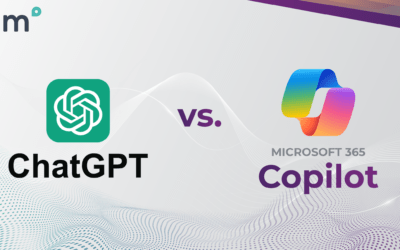Understanding EDR, MDR, and XDR: A Comparative Analysis
Over the past few years, three acronyms have gained significant prominence: EDR (Endpoint Detection and Response), MDR (Managed Detection and Response), and XDR (Extended Detection and Response). Each represents a unique approach to threat detection and response, catering to different organizational needs and security maturity levels. This blog will delve into the specifics of each technology, comparing their features, benefits, and use cases to help you make an informed decision for your cybersecurity strategy.

Endpoint Detection and Response
EDR solutions focus on monitoring and securing endpoints—such as laptops, desktops, and servers—against cyber threats. They provide real-time visibility into endpoint activities, enabling rapid detection and response to malicious activities.
Key Features:
- Real-time Monitoring: Continuous surveillance of endpoint activities to detect suspicious behavior.
- Behavioral Analysis: Utilizes advanced analytics and machine learning to identify anomalous activities.
- Incident Response: Facilitates rapid investigation and remediation of threats.
- Forensics: Offers detailed insights into attack vectors and methods used by adversaries.
Benefits:
- Enhanced visibility into endpoint activities.
- Swift detection and containment of threats.
- Detailed forensic capabilities for post-incident analysis.
Use Cases:
- Organizations with a high number of endpoints.
- Companies with in-house security teams capable of managing and responding to alerts.
- Enterprises seeking detailed forensic data for compliance and reporting.
Managed Detection and Response
MDR is a service-based approach that combines technology and human expertise to provide comprehensive threat detection, analysis, and response. MDR services are typically delivered by third-party security providers.
Key Features:
- 24/7 Monitoring: Round-the-clock surveillance of an organization’s IT environment.
- Expert Analysis: Involves security experts who analyze and validate threats.
- Incident Response: Proactive threat hunting and rapid response to security incidents.
- Reporting: Regular reports and recommendations for improving security posture.
Benefits:
- Access to experienced security professionals without the need for in-house expertise.
- Continuous monitoring and rapid response to threats.
- Cost-effective solution for organizations lacking comprehensive security teams.
Use Cases:
- Small to medium-sized businesses (SMBs) with limited security resources.
- Companies looking to augment their existing security operations with external expertise.
- Organizations seeking to outsource their security monitoring and incident response functions.
Extended Detection and Response
XDR is an integrated approach that extends the capabilities of EDR by ingesting a wide scope of telemetry across the most critical elements of the security stack—such as network, firewall, endpoint, email, identity, and DNS—to provide a holistic view of the threat landscape and detect well beyond the endpoint.
Key Features:
- Integrated Data: Correlates data across multiple security layers for comprehensive threat detection.
- Automated Response: Utilizes AI and machine learning to automate detection and response processes.
- Unified Platform: Offers a single pane of glass for monitoring and managing security incidents.
- Advanced Analytics: Leverages big data analytics to identify sophisticated threats.
Benefits:
- Broader visibility across the entire IT/OT environment.
- Improved detection accuracy through data correlation.
- Streamlined security operations with a unified platform.
Use Cases:
- Large enterprises with complex IT infrastructures.
- Organizations seeking to enhance their threat detection capabilities across multiple security domains.
- Companies looking to reduce the complexity of managing disparate security tools.
Comparative Analysis
| Feature | EDR | MDR | XDR |
| Focus Area | Endpoints | Managed service covering various IT environments | Multiple security layers (endpoint, network, etc.) |
| Monitoring | Real-time | 24/7 by security experts | Real-time across multiple layers |
| Expertise Required | In-house security team | Provided by the service provider | In-house team with advanced capabilities or service provider |
| Incident Response | In-house | Handled by service provider | Automated and manual |
| Integration | Endpoint-centric | Can integrate various tools | Highly integrated across different security tools |
| Cost | Medium to high | Subscription-based, often more cost effective | High (software + advanced capabilities) |
Choosing the Right Threat Detection Strategy is Crucial
Choosing between EDR, MDR, and XDR depends on your organization’s specific needs, security maturity, and available resources. EDR is suitable for organizations with robust in-house security teams focused on endpoint security. MDR offers a balanced approach for SMBs or companies seeking to outsource their security operations to expert providers. XDR is ideal for large enterprises requiring comprehensive, integrated threat detection and response capabilities across multiple security layers.
When facing today’s threats, having the right detection and response strategy is crucial. Evaluate your organization’s needs, resources, and goals to select the most appropriate solution—whether it’s EDR, MDR, or XDR—to enhance your cybersecurity posture and safeguard your digital assets. And remember, ANM is here to help should you want to explore your options with experts that can help you navigate the choices.

Robert Ochoa
Director, Cybersecurity Sales
Robert Ochoa joined the ANM team in late 2023 after serving in various leadership, networking, and cybersecurity roles across a 25+ year career at Okta, Cisco Systems, Calence Insight Networking, 3Com Corporation, AT&T Bell Labs, International Network Services, and Motorola Inc. Most recently Robert led the U.S. Public Sector SLED West cybersecurity teams at Cisco and Okta.
Prior to his corporate civilian experience as a security professional Robert served five years active duty in the US Army Signal Corps as COMSEC Officer / NCOIC Communication Security, domestic and overseas. His longest and most notable assignments included 7th Infantry Division 2nd Battalion 9th Infantry Regiment and 4th Battalion 229th Advanced Attack Helicopter Regiment. Following active-duty, he served in the Arizona National Guard where he trained various Infantry and Field Artillery teams in combat communication security and land navigation.
Robert’s career roles have included Network Systems Engineering, Cybersecurity Architecture, Product Specialization, Sales Leadership, and his current role as Director, Cybersecurity Sales at ANM. He is responsible for strategic client initiatives across ANM. Robert holds a Bachelor of Science, Business Information Systems degree from University of Phoenix, and several cybersecurity industry certifications.
Robert is a member of the FBI’s Arizona InfraGard, Arizona Cyber Threat Response Alliance, Information Systems Security Association (ISSA) Arizona Chapter, Information Systems Audit and Control Association (ISACA), and the International Information Systems Security Certification Consortium (ISC2). He has lectured at security user groups, large enterprises, colleges and universities, and government agencies around the U.S.
ChatGPT vs. Microsoft Copilot – What’s the Difference?
Artificial Intelligence (AI) has rapidly evolved, bringing forth innovative technologies designed to enhance productivity and efficiency. Two prominent players in this field, ChatGPT and Microsoft Copilot, have garnered attention for their capabilities in streamlining...
MPLS vs. SD-WAN
There’s no getting around the fact that a reliable and efficient Wide Area Network (WAN) is critical for businesses aiming to streamline operations and enhance connectivity across multiple sites. The goals for any WAN implementation are clear: it should seamlessly...
Exploring the Future of Collaboration: Are You Ready for M365 Copilot?
In today’s everywhere workplace, efficient collaboration is essential for businesses to thrive. With the rise of remote work and distributed teams, organizations are constantly seeking innovative tools to streamline their workflows and enhance productivity. One such...


